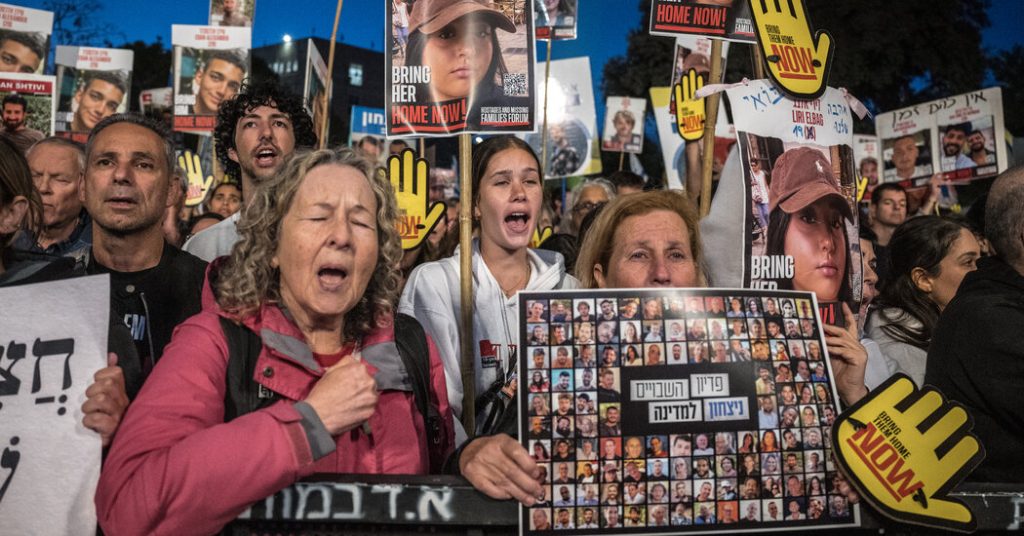A senior Hamas official recently announced that the group does not have 40 living hostages in Gaza that meet the criteria for exchange in a proposed cease-fire agreement being negotiated with Israel. The claim was relayed to Israeli officials, causing concerns that more hostages may have died than previously believed. Talks between Hamas and Israel have stalled due to disagreements over the conditions of a potential cease-fire, the return of displaced Palestinians to northern Gaza, and other issues. International negotiators have suggested an initial six-week cease-fire during which Hamas would release a first group of 40 hostages, including women, older individuals, ill hostages, and five female Israeli soldiers, in exchange for hundreds of Palestinians held in Israeli prisons and other demands.
Israeli officials estimate that about 130 hostages are still being held in Gaza, with at least 30 believed to have died in captivity according to Israeli intelligence officers. It remains unclear whether Israel will now require young men and soldiers to be included among the first 40 released captives, as originally planned for a later phase of the agreement. This development follows the recovery of the body of an Israeli hostage who was abducted during the Hamas-led October 7 attack, along with around 240 others. The Israeli government and Hamas briefly implemented a cease-fire in November to allow for the release of approximately 100 hostages captured during the attack in exchange for Palestinian prisoners held in Israel, providing a temporary relief from the intense bombing campaign.
The sensitive negotiations between Hamas and Israel have encountered significant challenges, with the latest disclosure regarding live hostages potentially complicating the situation further. There are disagreements over the terms of a cease-fire, the fate of the remaining hostages, and the status of displaced Palestinians in northern Gaza. The proposed exchange of hostages for Palestinian prisoners is a key aspect of the negotiations, with the initial group of 40 captives likely to include vulnerable individuals such as women, older hostages, and those in poor health. The inclusion of five female Israeli soldiers adds a unique dimension to the negotiation process, highlighting the complexities involved in reaching a comprehensive agreement.
The revelation that fewer living hostages are available for release than previously thought underscores the urgency of reaching a resolution to the ongoing conflict between Hamas and Israel. The possibility that additional hostages have died in captivity raises serious humanitarian concerns and underscores the importance of expediting the negotiation process. The recovery of the body of an Israeli hostage further emphasizes the need for swift action to secure the release of remaining captives and prevent further loss of life. The Israeli government and Hamas must navigate a delicate balance between meeting their respective demands while prioritizing the well-being and safety of all individuals affected by the conflict.
As the negotiations continue, international mediators remain actively engaged in facilitating dialogue and brokering a potential cease-fire agreement. The involvement of external parties underscores the global significance of resolving the conflict and achieving a lasting peace in the region. The challenges faced by both Israel and Hamas in reaching a comprehensive agreement highlight the complex nature of the conflict and the deep-rooted issues that must be addressed through diplomatic means. The release of hostages, the return of displaced individuals, and the ultimate goal of establishing sustainable peace and stability in Gaza are intertwined objectives that require careful negotiation and collaboration among all stakeholders involved. By working together to address these challenges, Israel and Hamas can move closer to resolving the conflict and creating a more secure and prosperous future for all those affected by the ongoing hostilities.


